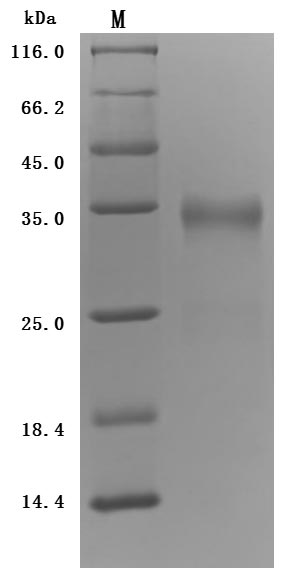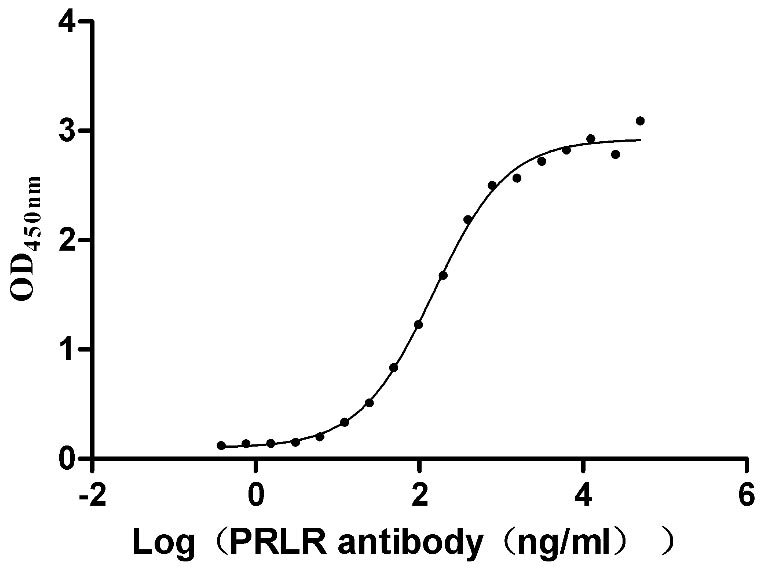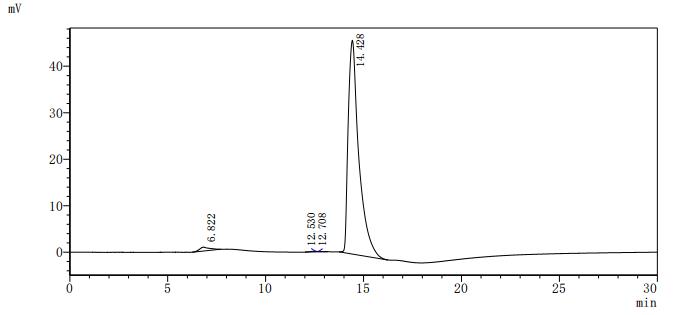CUSABIO's recombinant human PRLR (25-234aa) is an active protein expressed in mammalian cells. It carries a 10xHis-tag at the C-terminus. Its purity is up to 95% measured by SDS-PAGE. Its endotoxin and activity have been accessed.
PRLR is expressed on mammary gland cells, pancreatic β-cells, adipocytes, and immune cells. Upon binding to the PRL, PRLR occurs dimerization, activating the JAK2-STAT5-SOCS, PI3K, and MAPK signaling pathways thus leading to increased survival, proliferation, and differentiation of these cells. PRLR is involved in reproduction, islet differentiation, regulation of fat stores, and immune responses. PRL-PRLR interactions are essential for the development and differentiation of the normal breast. Abnormal PRL-PRLR activity has been related to the development of numerous cancers, including breast cancer. Enhanced PRLR expression and high circulating concentrations of PRL have been related to an increased risk of tumor progression and invasion.









